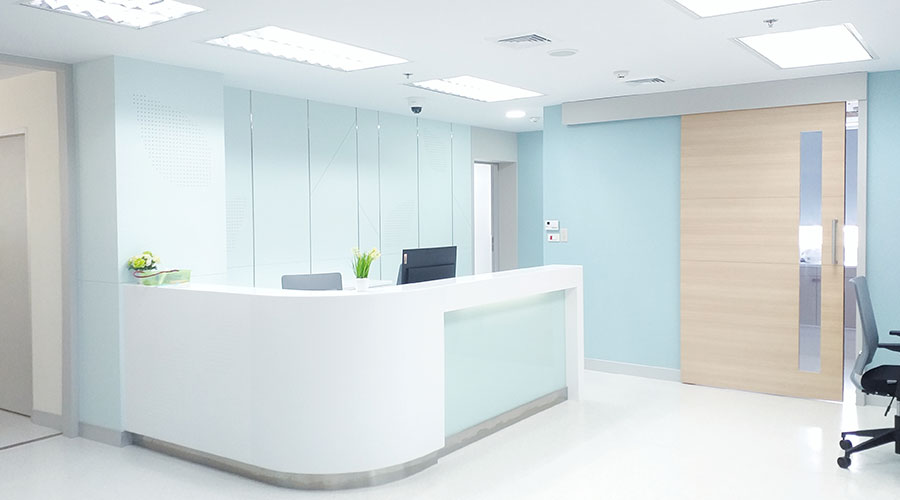Lighting has many different functions within a healthcare facility aside from simply illuminating a space. Given this, paying attention to using lighting effectively is important to providing a positive and healing experience with healthcare.
These are three key functions lighting provides for healthcare facilities and their occupants.
1: Patient well-being and recovery
Lighting has many effects on a patient and how their recovery goes, especially during stressful periods. Various aspects such as color temperatures and brightness levels can impact the mood of a patient, which contributes overall to their ability to recover. Warm light colors can soothe patients, while bright light colors can invigorate them.
Additionally, lights can be dimmed in both patient and visitor areas in the evening to signal that it’s time to wind down for sleep, says Ron Farmer, chief executive officer at US LED.
“Staff can also adjust the ambient lighting in individual rooms to help relax and uplift patients during recovery,” says Farmer. “This allows patients and visitors to change the light levels or color temperature (tunable white light) according to the time of day, which helps to maintain their circadian rhythm.”
Both a positive mood and adequate sleep are crucial for a patient’s successful recovery, both of which lighting helps support.
2: Wayfinding
Getting lost in a healthcare facility is common, especially if the building is large and features many different departments. Lighting can help illuminate signage and other forms of wayfinding, so patients and visitors don’t lose track of where they are.
“Traditional healthcare wayfinding systems leverage a combination of symbols, signage placement and color coding to orientate people to unfamiliar spaces,” says Ron Schmitz, marketing director at Toggled. “The advancement of modern lighting technologies provides additional advantages, such as the use of bright, clear lighting on focal points of emphasis to serve as key visual references and landmarks.”
Schmitz adds that directional lighting can highlight and direct people to patient recovery rooms, while indirect lighting can be used in unique ways on walls or ceilings to guide traffic through the facility. Even RGB color lighting can be used by being paired with clearly color-coded destination markers.
3: Aesthetics and atmosphere
Healthcare facilities are often perceived as cold, sterile places that people feel uncomfortable being in, which is why creating a calm and welcoming atmosphere is crucial to the overall experience. Normally, emphasis is placed on the “first impression areas” to make sure they are inviting and visually appealing, according to Tommy Nichols, LC, business development director for healthcare at Acuity Brands.
However, this emphasis on aesthetics hasn’t been consistently to patient care areas, nursing stations and staff lounges, Nichols says. This kind of disparity can impact the overall patient experience.
“By integrating aesthetically pleasing lighting into patient care spaces, healthcare facilities can foster a more comfortable and healing environment,” says Nichols. “This approach not only enhances the visual appeal of the spaces but also supports the well-being of patients, staff and visitors, ultimately contributing to a more holistic and effective healthcare experience.”
Jeff Wardon, Jr., is the assistant editor for the facilities market.

 Rethinking Strategies for Construction Success
Rethinking Strategies for Construction Success From Touchless to Total Performance: Healthcare Restroom Design Redefined
From Touchless to Total Performance: Healthcare Restroom Design Redefined New York State Approves $53M Construction Program at Niagara Falls Memorial Medical Center
New York State Approves $53M Construction Program at Niagara Falls Memorial Medical Center How Health Systems Are Rethinking Facilities Amid Margin Pressure
How Health Systems Are Rethinking Facilities Amid Margin Pressure Ground Broken on New Medical Office Building in Scottsdale, AZ
Ground Broken on New Medical Office Building in Scottsdale, AZ